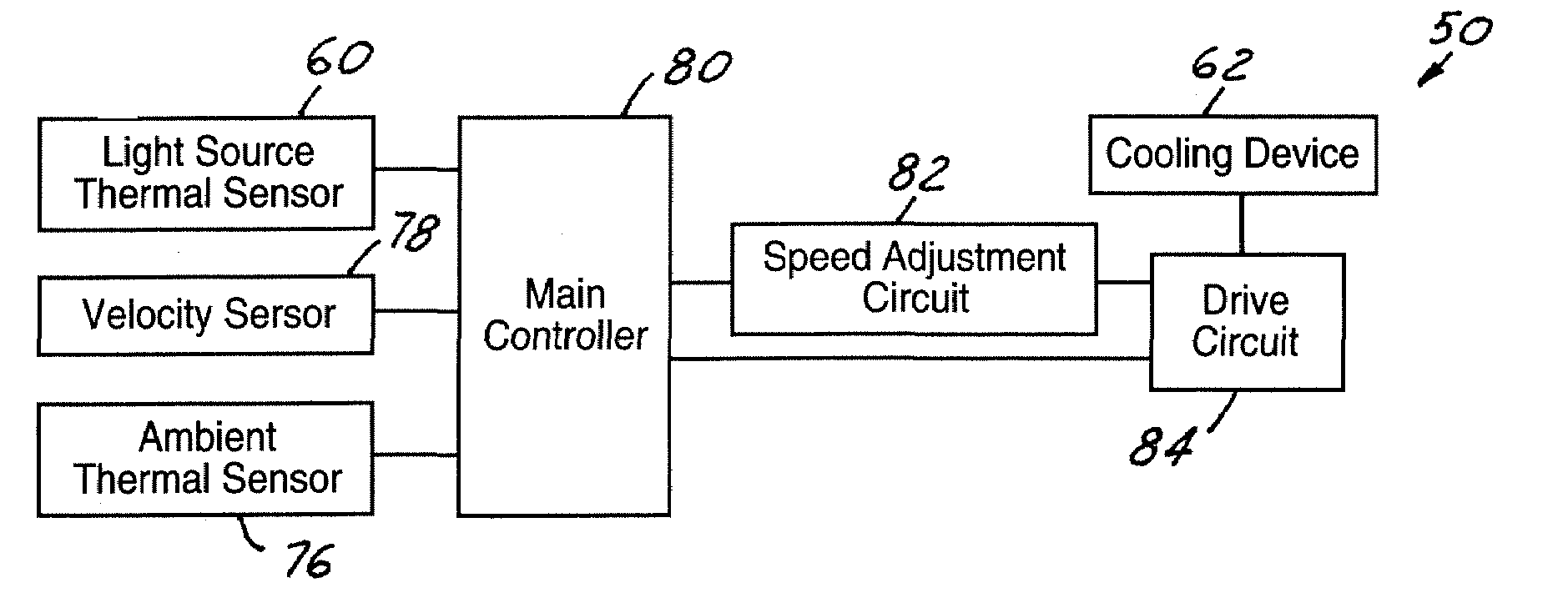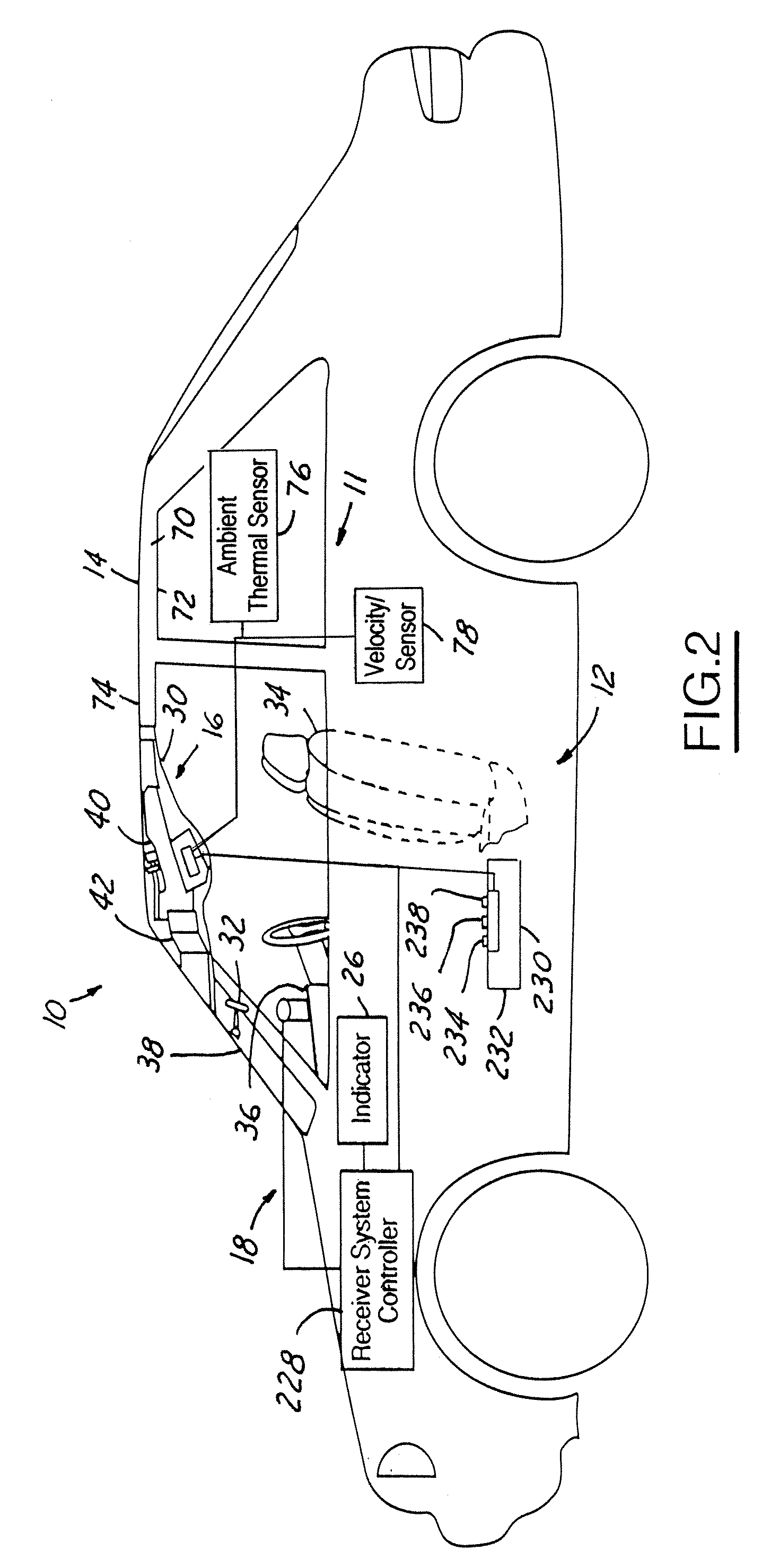Active night vision cooling system
a cooling system and active technology, applied in lighting and heating devices, electric apparatus casings/cabinets/drawers, instruments, etc., can solve the problems of affecting vehicle styling, difficult to interpret, and high cost of far-infrared cameras, so as to maximize the life of cooling devices, minimize operating noise, and efficiently adjust the temperature of light sources
- Summary
- Abstract
- Description
- Claims
- Application Information
AI Technical Summary
Benefits of technology
Problems solved by technology
Method used
Image
Examples
Embodiment Construction
[0026]In the following figures the same reference numerals will be used to refer to the same components. While the present invention is described with respect to a system and method of thermally controlling the operating range of a light source of an active night vision system, the present invention may be applied in various applications where near infrared imaging is desired, such as in adaptive cruise control applications, collision avoidance and countermeasure systems, and in image processing systems. The present invention may be applied during day-time hours or at night. The present invention may be applied in various types and styles of vehicles as well as in non-vehicle applications.
[0027]Also, although the present invention is described with respect an illumination system that is configured to be mounted within an overhead console of a vehicle, the present invention may be applied to light sources within or exterior to an interior cabin of a vehicle, as well as to other light...
PUM
 Login to View More
Login to View More Abstract
Description
Claims
Application Information
 Login to View More
Login to View More - R&D
- Intellectual Property
- Life Sciences
- Materials
- Tech Scout
- Unparalleled Data Quality
- Higher Quality Content
- 60% Fewer Hallucinations
Browse by: Latest US Patents, China's latest patents, Technical Efficacy Thesaurus, Application Domain, Technology Topic, Popular Technical Reports.
© 2025 PatSnap. All rights reserved.Legal|Privacy policy|Modern Slavery Act Transparency Statement|Sitemap|About US| Contact US: help@patsnap.com



